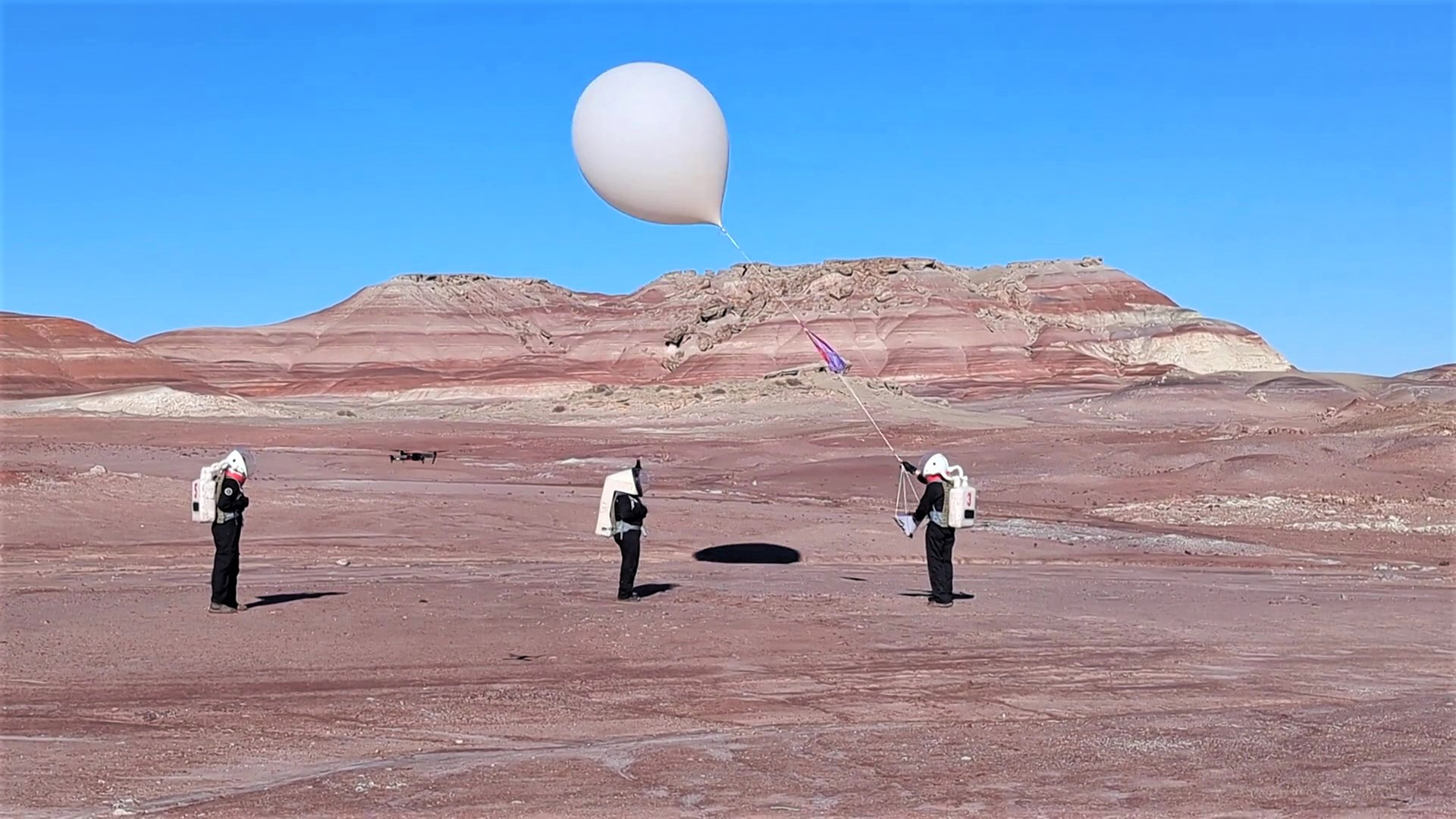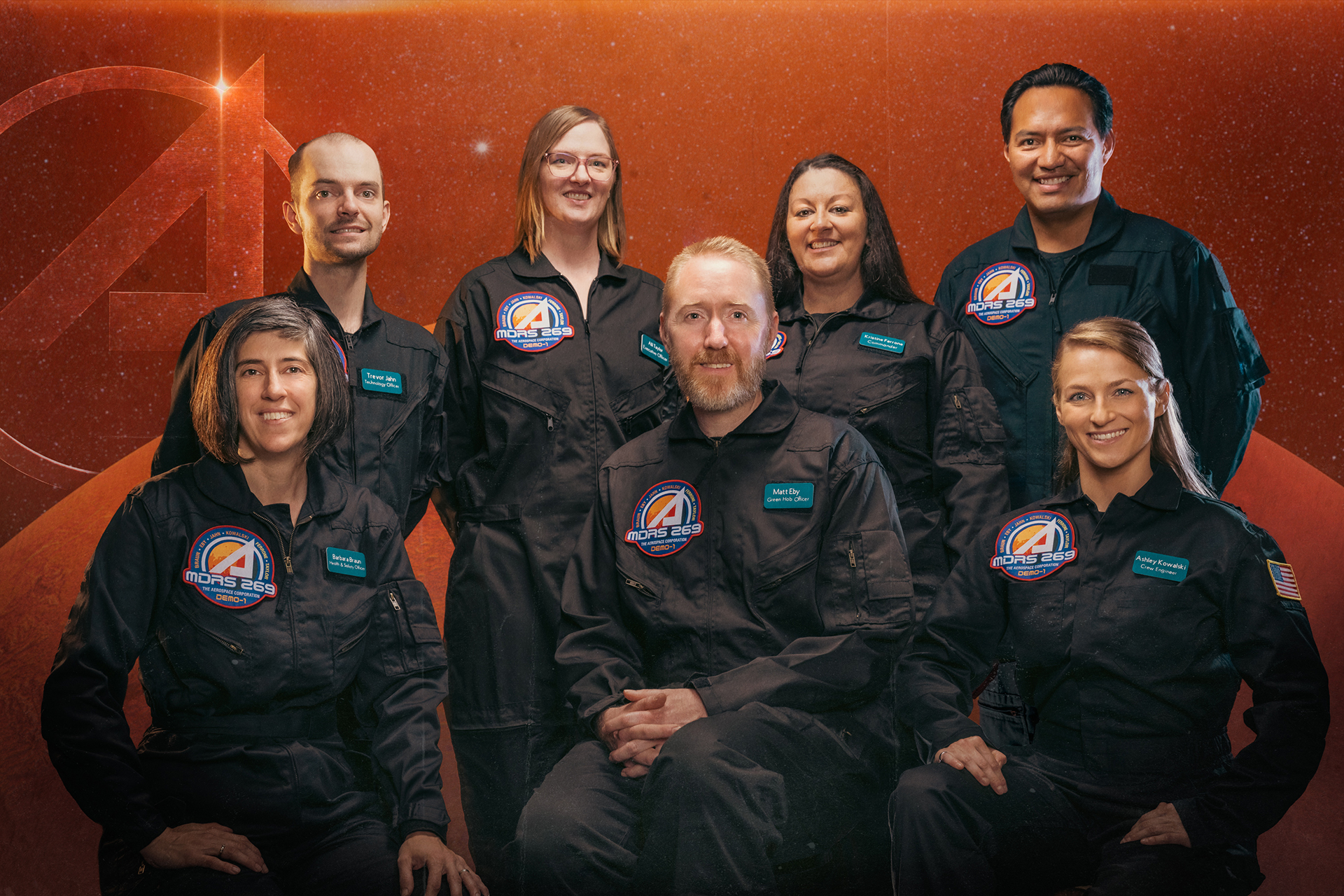Planning for Life on Mars
By Amy Pavlak Laird
Media Inquiries- Associate Dean for Communications, MCS
- 412-268-9982
The soft beeps from the handheld radiation dosimeter kept Kristine Ferrone company as she mapped the remote, barren landscape deep in the desert of southern Utah. She almost felt like she was on another planet. That was the goal.
The Carnegie Mellon University alumna commanded Crew 269 at the Mars Desert Research Station (MDRS) near Hanksville, Utah. For two weeks, Ferrone led the six-person crew, who lived and worked like astronauts at the MDRS, a Mars analog run by the Mars Society.
"When we go on a Mars mission, we really need to be prepared before we go," said Ferrone, associate system director at The Aerospace Corporation. "Analogs can bring a lot to the knowledge base and add to the overall preparations that we would make to go on an actual planetary mission."

The crew conducted a variety of experiments, including the deployment of a weather balloon that soared to 90,000 feet and studied the profile of the environment's atmosphere.
MDRS Crew 269 are all scientists and engineers from Aerospace, a nonprofit corporation that operates a Federally Funded Research and Development Center (FFRDC) that addresses activities from spacecraft design and launch to operations in space, including in cislunar and interplanetary environments.
While at the MDRS, the crew lived in total isolation in the habitat without real-time communications with anyone 'back on Earth,' including their friends and families or other scientists at Aerospace. Every time they ventured outside, they donned space suits.
"That's a really good environment to see what might get thrown at you," Ferrone said. "Nowadays we take for granted that we'll have GPS or Wi-Fi or cell service or Bluetooth or any of the things that we use seamlessly day to day. We discovered a lot of valuable things that we wouldn't have found just in the laboratory."
The crew conducted a range of experiments, from studying the harsh environment's impact on mirror coatings to deploying an atmospheric weather balloon. Ferrone's experiment focused on mapping the radiation environment surrounding the habitat. In Utah, the radiation level doesn't fluctuate much, but Ferrone's goal was to go through the exercise of mapping an area with the tools one might use on Mars and doing it in a space suit.
Practical details are important because scientists are not familiar with how the Martian terrain and the limited Martian atmosphere might shield an astronaut from space radiation. On Mars, astronauts would need to map the area with a radiation dosimeter to find which areas are particularly protected from radiation and which are exposed so that they know where to avoid spending time.
Ferrone's radiation measurements, which were the first from the MDRS location, have been added to a database that details background radiation levels across the globe.

The MDRS is not Ferrone's first time on a Mars analog mission. In 2009 she spent a month as a crew member at the Mars Society's Flashline Mars Arctic Research Station (FMARS) on Devon Island, the largest uninhabited island on Earth. While there she conducted high power laser therapy experiments on her fellow crew members to determine whether a laser therapy could be a viable option to take to Mars to treat astronauts for muscle and joint soreness, and to help heal cuts and sores.
Ferrone graduated with a bachelor of science degree in physics/astrophysics from Carnegie Mellon in 2004. She went on to earn an MBA from the University of Florida, Gainesville, a master of science degree in sports medicine from the United States Sports Academy, a master of science degree in space architecture from the University of Houston, and a Ph.D. in medical/radiation physics from the University of Texas MD Anderson Cancer Center Graduate School of Biomedical Sciences. For the past 12 years she's worked at Aerospace, where she's been involved with a range of projects, including NASA human spaceflight, space nuclear power and concept design for new vehicles. She currently is working on Department of Defense human spaceflight payloads. Before joining Aerospace, she was a senior mission scientist and a flight controller for the International Space Station.
"All of the things that I've worked on in my career have been to become better qualified to work in human spaceflight and to help further human spaceflight," Ferrone said, adding that she has always had her eye on becoming an astronaut. She has applied to NASA's astronaut training program, and she plans to apply again when the next application process opens. "I keep trying to add skills and experiences that would make me a better candidate, so we'll see what happens this next time they have a call."
For now, Ferrone is taking the lessons she and her crew learned at the MDRS back to Aerospace.
"What my team at Aerospace does every day is build space hardware, we build things to go to the International Space Station," she said. "It's really valuable to have that experience being on the other side, to know what is it that keeps the crew up at night? What are they thinking about? What is distracting to them? What is helpful to them? These are things that we can build upon and go forward."